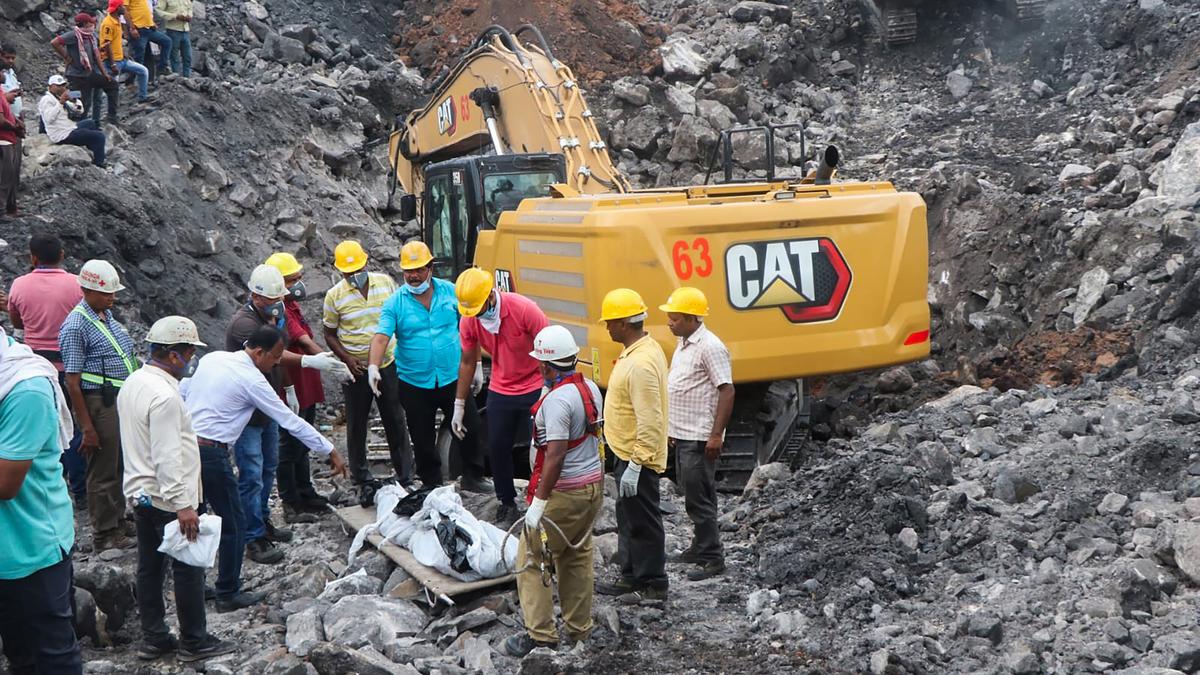
Bodies of 3 women recovered after land subsidence in Dhanbad's coal mine area
The Hindu
Baghmara circle officer Ravi Bhushan Prasad, who was overseeing the rescue operation, said the last body was brought out from the crater around 9.20 p.m. on Monday.
Bodies of three women were recovered from a crater where they fell following a land subsidence at a colliery area in Jharkhand's Dhanbad district, officials said on September 19.
The women got trapped in the deep crater after the soil caved in at Gondudih colliery in the command area of Bharat Coking Coal Limited (BCCL) on Sunday, they said.
Baghmara circle officer Ravi Bhushan Prasad, who was overseeing the rescue operation, said the last body was brought out from the crater around 9.20 p.m. on Monday.
The first body was recovered on Sunday evening, he said, adding that the second body was found around 1.30 p.m. on Monday.
A team of the National Disaster Response Force (NDRF) was leading the rescue operation that lasted for around 34 hours, Mr. Prasad said.
All the three women were residents of Chhotki Bouwa Basti, he said.
After the bodies were recovered, locals began a protest, demanding compensation for the deaths.

“Writing, in general, is a very solitary process,” says Yauvanika Chopra, Associate Director at The New India Foundation (NIF), which, earlier this year, announced the 12th edition of its NIF Book Fellowships for research and scholarship about Indian history after Independence. While authors, in general, are built for it, it can still get very lonely, says Chopra, pointing out that the fellowship’s community support is as valuable as the monetary benefits it offers. “There is a solid community of NIF fellows, trustees, language experts, jury members, all of whom are incredibly competent,” she says. “They really help make authors feel supported from manuscript to publication, so you never feel like you’re struggling through isolation.”

Several principals of government and private schools in Delhi on Tuesday said the Directorate of Education (DoE) circular from a day earlier, directing schools to conduct classes in ‘hybrid’ mode, had caused confusion regarding day-to-day operations as they did not know how many students would return to school from Wednesday and how would teachers instruct in two modes — online and in person — at once. The DoE circular on Monday had also stated that the option to “exercise online mode of education, wherever available, shall vest with the students and their guardians”. Several schoolteachers also expressed confusion regarding the DoE order. A government schoolteacher said he was unsure of how to cope with the resumption of physical classes, given that the order directing government offices to ensure that 50% of the employees work from home is still in place. On Monday, the Commission for Air Quality Management in the National Capital Region and Adjoining Areas (CAQM) had, on the orders of the Supreme Court, directed schools in Delhi-NCR to shift classes to the hybrid mode, following which the DoE had issued the circular. The court had urged the Centre’s pollution watchdog to consider restarting physical classes due to many students missing out on the mid-day meals and lacking the necessary means to attend classes online. The CAQM had, on November 20, asked schools in Delhi-NCR to shift to the online mode of teaching.









